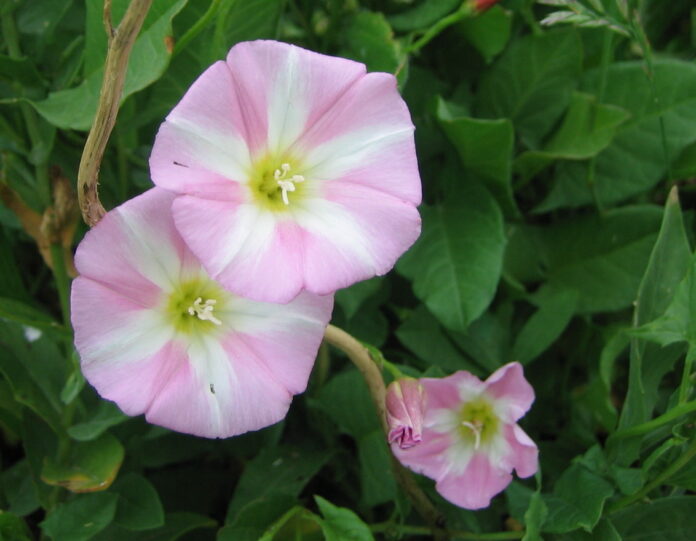
By Blaine Bug Crew
Imagine going out in your front yard to pull some weeds. You see a viney plant and try to pull it. It breaks off in your hand, but you feel better that you can’t see it. Little do you know that you have had an experience with a plant that has roots that grow many feet into the ground. Field bindweed is an invasive predator that is almost impossible to mechanically combat. Here are some of the facts.
Field bindweed is a creeping perennial vine native to Eurasia. It can grow from 0.3 to m in length and often forms dense infestations consisting of one or more. Leaves are round to arrow-Shaped 2.5 to 5.7 cm long and alternate along a prostrate stem.flowering occurs in the mid-summer, when white to pale pink, funnel shaped flowers develops and continues into early fall.Flowers are typically 1.9-2.5 cm in diameter and are by small bracts. Seed pods are pointed and approximately 5 mm long. Each pod contains four rough, pear-shaped seeds which can remain viable in the soil for up to 10 years and as long as 50 years under the right conditions. Field bindweed is thought to have been introduced into North America as a contaminant in crop seed as early as 1739. Plants tolerate a wide range of environmental conditions and elevations – from cultivated fields to waste areas. This invasive species is present in all 48 contiguous states and Hawaii. Now let’s introduce an insect that eats bindweed.
Aceria malherbae is a gall-forming Eriophyid mite which stunts, reduces plant density, and reduces flowering in field bindweed. Galls are typically found on the leaves or stem buds. The stems form compact clusters of stunted leaves when they are attacked. When the leaves are attacked, they fold or twist upward along the midrib where the mite feeding occurs. These agents are present year-round producing multiple generations per year. The two nymphal stages resemble the adults but lack external genitalia. The adults are microscopic and worm-like with an annulate body with two pairs of legs of the combined head and thorax. The soft-bodied adults are increasingly available from established field sites. Galls can be handpicked and stored for several weeks if refrigerated. Wrapping infested stems around bindweed plants or transferring individual galls to the tip of the stem are the best methods to conduct new releases.
Now you have been informed about how to identify field bindweed and why it is such an invasive plant. You also know how biological control is used to combat it. If you spot an infestation of field bindweed and decide that you want to help in the fight, please contact Morgan Baird at (208)788-5543 EXT.1136.


